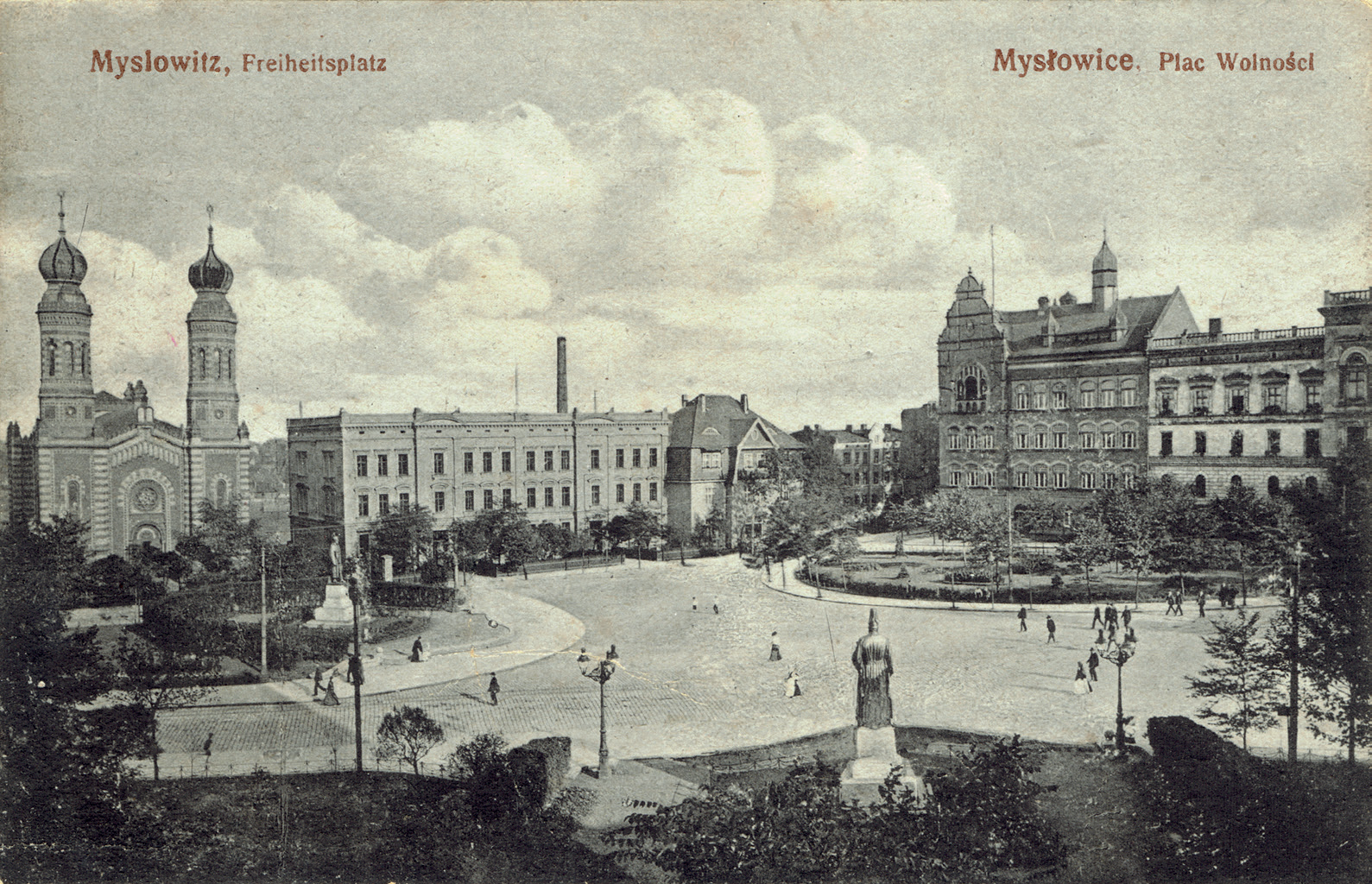Myslowitz, Freiheitsplatz
Myslowitz, Freiheitsplatz. Mysłowice. Plac Wolności. Interwar Period.
We hope you are enjoying the images and words on our page. Please help us run this page by buying one of our books here.
Myslowitz (now Mysłowice) is located just ten kilometres southeast of Katowice (German: Kattowitz). Following the annexation of Cracow by the Austrians in 1846, Prussia, Russia and Austria all bordered on the confluence of two rivers just outside Myslowitz. Following the creation of the Imperial German nation state in 1871, this became the so-called Three Empires (sometimes: Three Emperors’) Corner and a major tourist attraction. The new synagogue, inaugurated on 10 September 1897, might, from afar, well have been mistaken for a church. Yet on closer inspection, it combined one particular form of standard church architecture with various neo-Moorish features. The striped masonry of the central sections of the two towers, the ornamental quoin stones at the corners and the matching ornamental masonry above the portal are obvious cases in point. Of course, the tablets of the law above the main portal in any case made clear that this was indeed a synagogue and not a church. The parokhet, incidentally, was created by the prestigious studio of Jenny Bleichrode (1864–1931) in Berlin. Before making its way to Myslowitz, it was presented at the Great Trade Fair that took place in Berlin in the summer of 1896. “Der Gemeindebote” described it as a “precious and artful temple curtain”, adding that, “in the centre, it displays a sumptuous group of lions beneath a framed crown, all in real gold embroidery. The whole piece is framed by a visually satisfying bordure.” Bleichrode’s younger sister, Rosa (Rosalie) Bleichrode (1872–1943), also worked for the studio. She later perished in Theresienstadt. The Germans burnt the synagogue to the ground on 5 September 1939, almost immediately after their arrival in the city.
In its October 1897 edition, “Im deutschen Reich”, the periodical of the Central Association of German Citizens of the Jewish Faith, reported as follows: “Hundreds arrived from elsewhere in the course of the morning to attend the inauguration of the new synagogue. Following a solemn farewell from the old place of worship, a festive procession formed. It was joined by delegates of the royal authorities and the complete magistrate and town council. The procession made its way through streets adorned by festive arches, garlands and flags. Not only the Jewish shops but the Christian businesses too were closed for the duration of the procession. The synagogue’s architect, Regierungsbaumeister Grünfeld, presented the gold-plated key to the main entrance to the chair [of the Jewish community], Isaak Kuznicki. He, in turn, asked Mayor Odersky to unlock the doors to the temple with the key. Accepting the request, the mayor spoke in a most moving manner, and the festive and profoundly solemn service was soon underway. At half past six in the evening, a banquet with some 150 attendees was held at Grunwald’s Hotel. High-ranking officials, the clergy of the other denominations and various other Christian fellow citizens were among the guests.”

